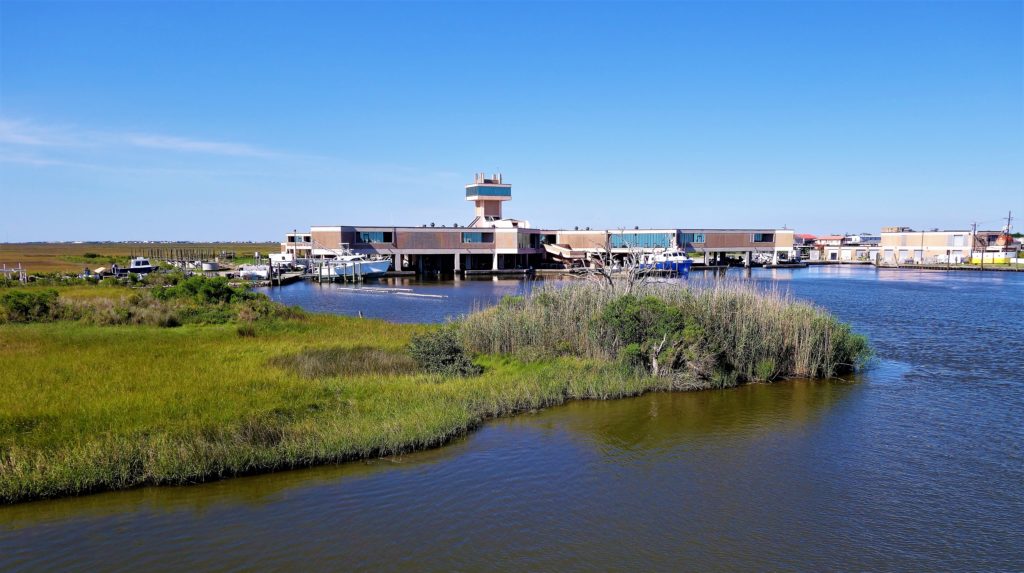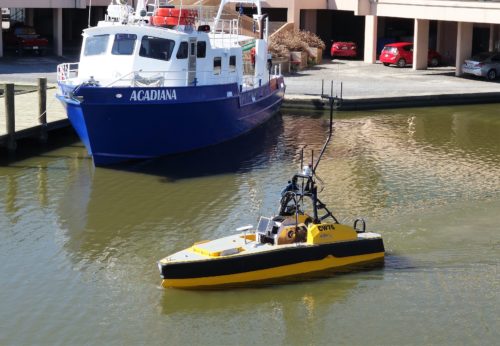By Amy Whitt
Winding our way through Louisiana’s marshes, we headed out to sea as part of an expedition to research marine mammals in the northern Gulf of Mexico. Azura’s intern and recent high school graduate, Alexandria Hahn, and I have joined the LADC-GEMM research team for this survey. The Littoral Acoustic Demonstration Center-Gulf Ecological Monitoring and Modeling (LADC-GEMM) is a consortium of scientists from the University of Southern Mississippi (USM), the University of New Orleans, Oregon State University (OSU), and the University of Louisiana at Lafayette (ULL). This consortium has been collaborating through the LADC to study marine mammal acoustics and ambient noise in the Gulf of Mexico since 2001.

Our trusty steed on this expedition is the R/V Pelican, a 116-foot long research vessel owned and operated by the Louisiana Universities Marine Consortium (LUMCON) based deep in the bayou in Cocodrie, Louisiana. The Pelican will be our home for the next 10 days as we utilize a variety of equipment to record underwater acoustic data and visually search for marine mammals.
The main goal of this study is to quantify short-term and long-term changes in baseline ambient noise levels and marine mammal distribution in the Mississippi Canyon region of the northern Gulf of Mexico near where the Deepwater Horizon oil spill incident occurred in 2010. LADC-GEMM scientists have been conducting similar studies in this region since before the oil spill. Therefore, they have acquired a unique dataset that will be used to direct conservation measures to minimize future potential impacts to marine mammals.

The research team for this survey includes scientists from LADC-GEMM, Proteus Technologies LLC, Seiche Measurements Limited, and Azura Consulting LLC. We are using a variety of equipment to record acoustic and visual detections of marine mammals. Acoustic data are being collected using an Autonomous Surface Vehicle (ASV) with a towed hydrophone (underwater microphone) array, a Seaglider, and several bottom-mounted Environmental Acoustic Recording System (EARS) buoys. We are using the Navy’s Fujinon big eye binoculars to scan the water’s surface for marine mammals.
***This blog article is part of our LADC-GEMM 2017 Survey blog series. Check out more articles in this series here, on the LADC-GEMM website, and on Alexandria Hahn’s blog. Also, be sure to “Like” the new LADC-GEMM Facebook page!***

